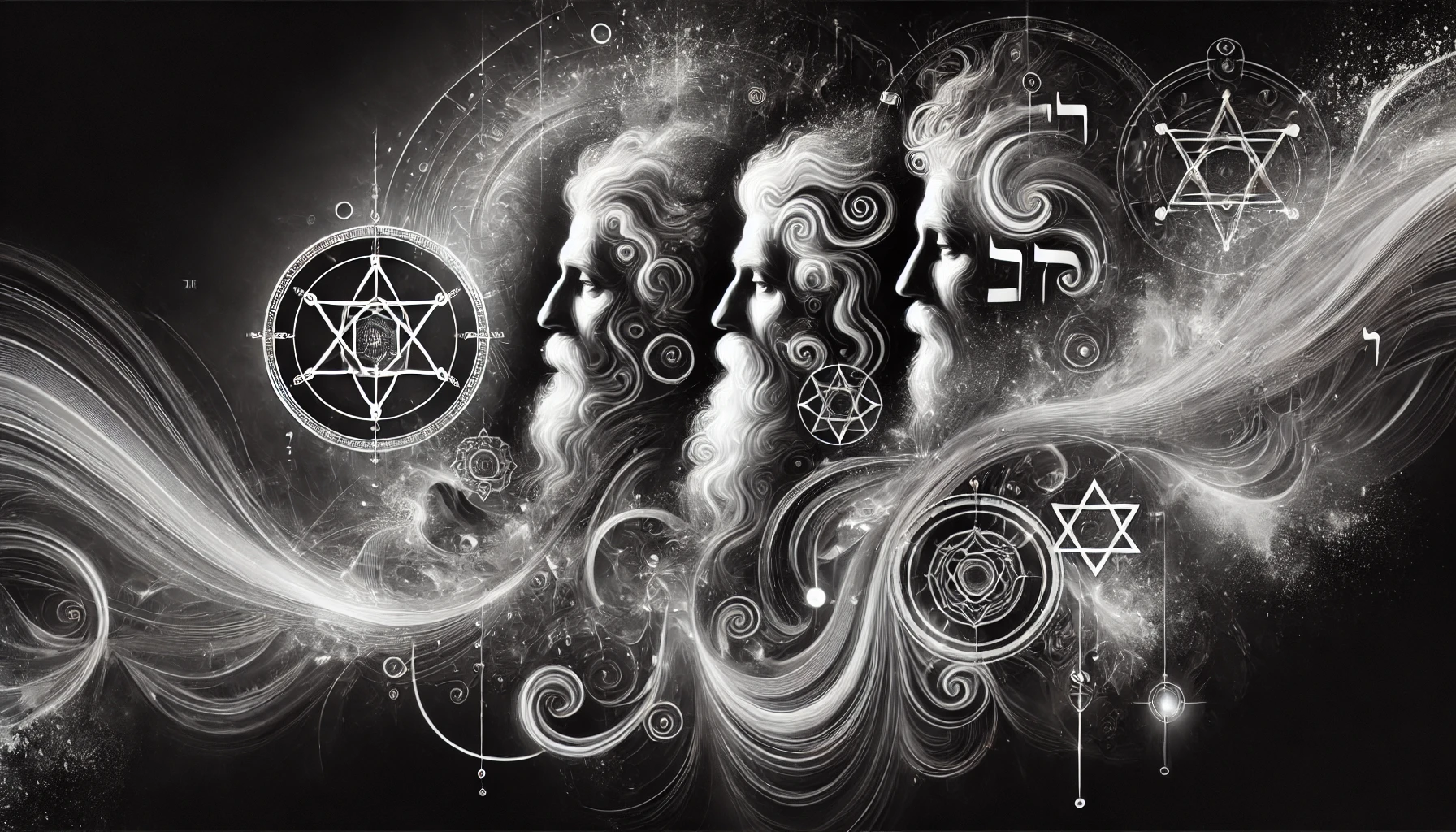Table of Contents
Kabbalah, the mystical aspect of Jewish tradition, has been shaped and enriched by numerous influential figures throughout its history. These individuals have contributed to the development, interpretation, and dissemination of Kabbalistic teachings, leaving a lasting impact on Jewish mysticism and spiritual thought.
Some Major Figures in Kabbalah
Rabbi Shimon bar Yochai
Rabbi Shimon bar Yochai, often referred to as Rashbi, is traditionally credited with the authorship of the Zohar, the foundational text of Kabbalah. He lived in the 2nd century CE during the Roman occupation of Judea.
Life and Historical Context
Rashbi was a prominent sage and disciple of Rabbi Akiva, one of the greatest Jewish scholars of his time. According to tradition, Rashbi spent thirteen years hiding in a cave with his son to escape Roman persecution, during which he delved deeply into mystical studies.
Contributions to Kabbalah
The Zohar, attributed to Rashbi, is a mystical commentary on the Torah, offering profound insights into the nature of God, the cosmos, and the human soul. It explores complex themes such as the Sefirot, divine emanations, and the interplay between the spiritual and material worlds. Rashbi’s teachings emphasize the importance of spiritual purity and the pursuit of divine wisdom.
Legacy
Rabbi Shimon bar Yochai is revered as a central figure in Kabbalah. His teachings in the Zohar have inspired countless generations of mystics and scholars, cementing his legacy as a foundational figure in Jewish mysticism.
Isaac Luria (The Ari)
Isaac Luria, also known as the Ari or the Holy Lion, is one of the most influential figures in the history of Kabbalah. His innovative teachings in the 16th century transformed Kabbalistic thought and practice.
Life and Historical Context
Luria was born in Jerusalem in 1534 and later moved to Safed, a town in northern Israel that became a center of Kabbalistic study. Despite his short life—he died at the age of 38—Luria’s impact on Kabbalah was profound.
Lurianic Kabbalah
Luria’s teachings, known as Lurianic Kabbalah, introduced several new concepts that reshaped Kabbalistic thought. Key ideas include Tzimtzum (divine contraction), Shevirat HaKelim (shattering of the vessels), and Tikkun Olam (repairing the world). Luria emphasized the role of human beings in the cosmic process of rectification and spiritual ascent.
Legacy
Isaac Luria’s teachings were recorded by his disciples, particularly Chaim Vital, and have had a lasting influence on Jewish mysticism. Lurianic Kabbalah remains a cornerstone of Kabbalistic study and practice, inspiring spiritual seekers to engage in the ongoing work of cosmic repair.
Moses de Leon
Moses de Leon is often associated with the composition or compilation of the Zohar. Living in 13th-century Spain, de Leon played a crucial role in the dissemination of Kabbalistic teachings.
Life and Historical Context
Moses de Leon was a Spanish Jewish mystic and scholar who lived during a period of vibrant intellectual and spiritual activity in medieval Spain. His work on the Zohar helped bring the mystical teachings of Kabbalah to a broader audience.
Contributions to Kabbalah
De Leon’s association with the Zohar is significant, as this text has become one of the central works of Kabbalistic literature. The Zohar blends biblical exegesis, mystical theology, and ethical teachings, offering a rich and complex vision of the divine and the cosmos.
Legacy
Moses de Leon’s work on the Zohar has had a profound and lasting impact on Kabbalah. The text remains a primary source for Kabbalistic study, and de Leon’s contributions continue to be recognized and celebrated by scholars and mystics alike.
Chaim Vital
Chaim Vital was a key disciple of Isaac Luria and played a crucial role in preserving and disseminating Lurianic Kabbalah. His writings provide a comprehensive account of Luria’s teachings.
Life and Historical Context
Chaim Vital was born in Safed in 1542 and became a close student of Isaac Luria. After Luria’s death, Vital dedicated himself to compiling and recording his master’s teachings.
Contributions to Kabbalah
Vital’s most important work is the Etz Chaim (Tree of Life), which systematically presents Luria’s complex Kabbalistic doctrines. His writings detail the processes of creation, the nature of the soul, and the principles of cosmic repair and spiritual ascent.
Legacy
Chaim Vital’s meticulous recording of Luria’s teachings has ensured the preservation and transmission of Lurianic Kabbalah. His works are essential reading for students of Kabbalah, providing deep insights into the mystical processes of the universe.
Rabbi Yehuda Ashlag
Rabbi Yehuda Ashlag, also known as Baal HaSulam, was a prominent 20th-century Kabbalist who sought to make Kabbalistic teachings more accessible to the modern world.
Life and Historical Context
Born in Poland in 1885, Ashlag later moved to Jerusalem, where he devoted himself to studying and teaching Kabbalah. He wrote extensive commentaries on the Zohar and the works of Isaac Luria.
Contributions to Kabbalah
Ashlag’s primary contribution was his commentary on the Zohar, known as the Sulam (Ladder). He aimed to make the esoteric teachings of Kabbalah understandable to a broader audience, emphasizing the practical application of Kabbalistic principles.
Legacy
Rabbi Yehuda Ashlag’s efforts to democratize Kabbalah have made its teachings more accessible to contemporary spiritual seekers. His works continue to be studied by those seeking to integrate Kabbalistic wisdom into their lives.
The major figures in Kabbalah—Rabbi Shimon bar Yochai, Isaac Luria, Moses de Leon, Chaim Vital, and Rabbi Yehuda Ashlag—have each made significant contributions to the development and dissemination of Kabbalistic thought. Their teachings and writings provide a rich tapestry of mystical wisdom that continues to inspire and guide spiritual seekers.
Bibliography
- Scholem, Gershom. Major Trends in Jewish Mysticism.
- Dan, Joseph. Kabbalah: A Very Short Introduction.
- Matt, Daniel C. The Essential Kabbalah: The Heart of Jewish Mysticism.
- Luria, Isaac. Etz Chaim.
- Ashlag, Yehuda. The Sulam Commentary on the Zohar.
FAQ
- Who are some major figures in Kabbalah?
Key figures include Rabbi Shimon bar Yochai, Isaac Luria, Moses de Leon, Chaim Vital, and Rabbi Yehuda Ashlag. - What is Rabbi Shimon bar Yochai known for?
He is traditionally credited with the authorship of the Zohar, a foundational text in Kabbalah. - Who was Isaac Luria?
Isaac Luria, also known as the Ari, was a 16th-century Kabbalist whose teachings transformed Kabbalistic thought. - What is the significance of Moses de Leon?
Moses de Leon is associated with the composition or compilation of the Zohar. - Who was Chaim Vital?
Chaim Vital was a disciple of Isaac Luria who recorded and preserved Luria’s teachings. - What are the main contributions of Rabbi Yehuda Ashlag?
Rabbi Yehuda Ashlag made Kabbalistic teachings more accessible through his commentaries, particularly the Sulam. - What is Lurianic Kabbalah?
Lurianic Kabbalah, developed by Isaac Luria, introduces concepts like Tzimtzum and Tikkun Olam. - What is the Zohar?
The Zohar is a mystical commentary on the Torah, offering profound insights into the divine and the cosmos. - What is Tzimtzum in Kabbalah?
Tzimtzum is the concept of divine contraction, creating space for the finite world to exist. - What is Tikkun Olam?
Tikkun Olam means “repairing the world” and emphasizes human responsibility to restore and perfect creation. - How did Chaim Vital contribute to Kabbalah?
Chaim Vital recorded and disseminated the teachings of Isaac Luria, particularly in the Etz Chaim. - What is Rabbi Yehuda Ashlag’s Sulam?
The Sulam is Ashlag’s commentary on the Zohar, making its teachings more accessible. - Who was Rabbi Shimon bar Yochai?
A 2nd-century sage traditionally credited with the authorship of the Zohar. - What impact did Isaac Luria have on Kabbalah?
Luria’s teachings reshaped Kabbalistic thought, emphasizing human involvement in cosmic repair. - What are the Sefirot?
The Sefirot are ten divine attributes or emanations through which God interacts with the world. - Why is the Zohar important in Kabbalah?
The Zohar is a central text, offering deep mystical insights and shaping Kabbalistic study. - What role did Moses de Leon play in Kabbalah?
He is associated with the composition or compilation of the Zohar, a key Kabbalistic text. - What is the significance of the Etz Chaim?
The Etz Chaim is a key text by Chaim Vital that presents the teachings of Isaac Luria. - How has Kabbalah evolved over time?
Kabbalah has evolved through the contributions of key figures, adapting to contemporary contexts while maintaining its mystical core. - Why is Kabbalah relevant today?
Kabbalah offers timeless insights into existence and spirituality, guiding contemporary seekers on their spiritual journeys.


Leave a Reply